
Foldable Fractal is a project originaly created during the Generator.x 2.0: ‘Beyond The Screen’ workshop run by Marius Watz, in Berlin in 2007. The piece was generated using a recursive algorythm based on Lindermayer system . The software vvvv was used to generate the cutting path. The piece is based on a recursion of a pentagon shape formed after folding a pentagonal dodecahedron . The piece was created using the laser to score the material to enqble folding, thus simplifying and accelerating the process of fabrication.
Read more

“Been working on this project for the past few months and so far the feedback at our LGS has been encouraging. hoping to launch a kickstarter in the next few days and looking for some feedback before continuing
the walls come in 1,2,3,4,5,6,7 and 8 inch sections, all walls are double sided, the floors come in several sizes and they are made so the buildings/structures can be put together and taken apart in minutes and stored in a small box ( I should be able to fill an entire table with a shoe box’es worth). we are burning more prototypes this week and should have more pictures by the end of the week.”
– daviddasilva
Read more
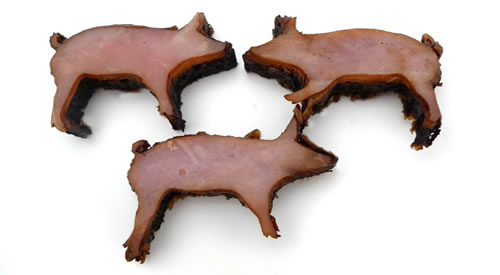
When asked to come up with an idea of a product to test under the laser cutter at NYDesigns by Design Glut. Jan Habraken & Alissia Melka-Teichroew decided that they had cut pretty much every material but food. This is where the hunt started, what foods can we cut or etch and also create something fun and something that would be too complicated to do manually (why else would you laser cut!). We decided sandwiches, pancakes, chocolate bars, sugar glass, tuna (can you imagine the seared edge the laser could make!). There was only time to etch some pancakes and cut some piggy “ham & cheese” sandwiches.
Read more
 Nagutron has created an easily accessible and understandable guide to creating a 3-dimensional laptop stand. The strategies used in this tutorial can be utilized when creating a multitude of organic shapes by cutting curved edges with simple glue-less and hardware-less joints. Although this artist utilizes Illustrator in his/her design, the skills learned in this tutorial are more than transferable to other 2d and 3d applications. (More…)
Nagutron has created an easily accessible and understandable guide to creating a 3-dimensional laptop stand. The strategies used in this tutorial can be utilized when creating a multitude of organic shapes by cutting curved edges with simple glue-less and hardware-less joints. Although this artist utilizes Illustrator in his/her design, the skills learned in this tutorial are more than transferable to other 2d and 3d applications. (More…)
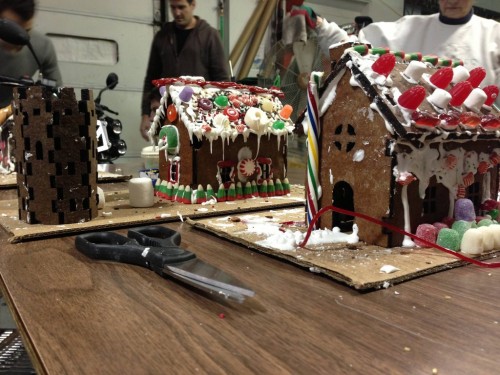 The folks at Sector67, a Madison Wisconsin based prototyping and technology firm, wanted to spice up their holiday season by implementing laser cutter techniques into their annual Christmas tradition. This project shows some practical uses of non conventional laser cutter materials. This definitely opens up your material options! (More…)
The folks at Sector67, a Madison Wisconsin based prototyping and technology firm, wanted to spice up their holiday season by implementing laser cutter techniques into their annual Christmas tradition. This project shows some practical uses of non conventional laser cutter materials. This definitely opens up your material options! (More…)
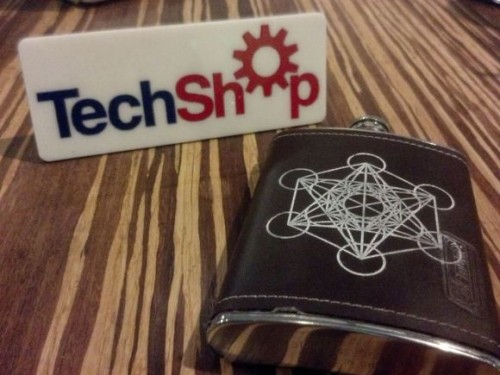 This project details a very inventive way to not accidentally burn your material when attempting to etch in designs. By simply using some painter’s tape and high contrast paint, you can make laser etches really pop and stand out in your piece. This project was done on a slightly curved and soft material but I believe the process is highly transferable to harder materials on a flat surface. (More…)
This project details a very inventive way to not accidentally burn your material when attempting to etch in designs. By simply using some painter’s tape and high contrast paint, you can make laser etches really pop and stand out in your piece. This project was done on a slightly curved and soft material but I believe the process is highly transferable to harder materials on a flat surface. (More…)

The project “wooden textiles” intends to look at the material wood in a new way. Geometric wooden pieces compose a flexible surface which can perform in different three-dimensional shapes. The material ranges between hard and soft, parquet and carpet, blurring relationships between furniture and textiles.
Read More.
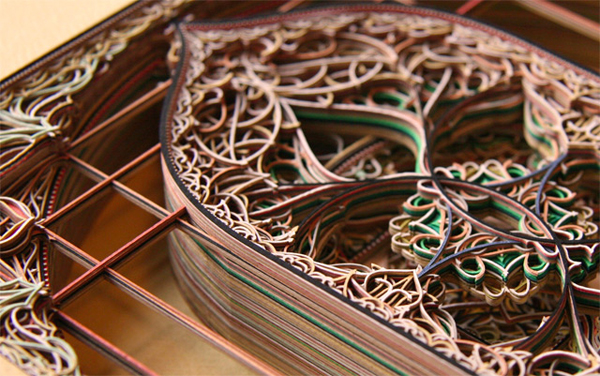
Inspired by Gothic and Islamic architecture, these beautiful paper art pieces bear strong resemblance to the stained glass windows so often seen in the great Cathedrals of the Gothic period.
Read More
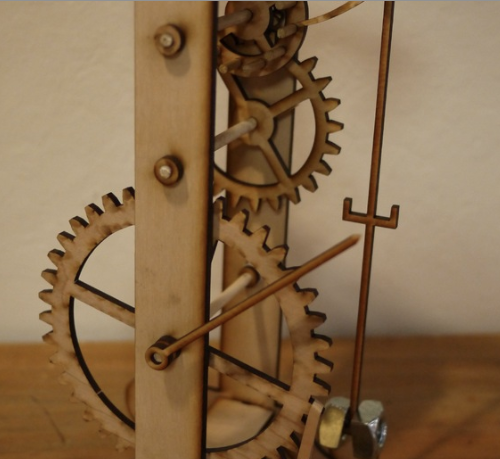
This functional model was made by Fonstad based on Galileo’s drawings. It operates on gears and stored energy (rubber band). This is designed to be cut from 1/4″ (5mm) plywood.
More…
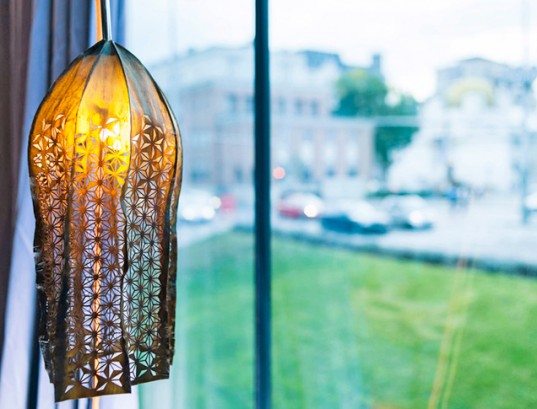
Artist Julia Lohmann has used the sensational seaweed to create beautiful laser-cut lampshades. The kelp’s dried green skin produces a soft glow while the pierced geometric patterns reminiscent of Japanese textiles give the lampshade a lacy, delicate look.
Read more









